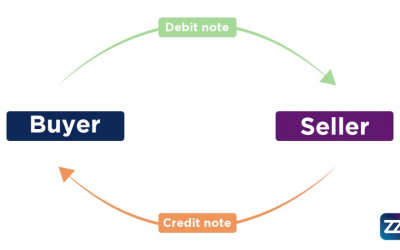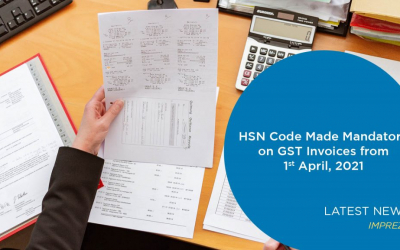Inventory is the lifeline of every business which helps in the smooth functioning of business and meet the need of customers. The effective management of your inventory determines the success of your business. The importance of managing your inventory should be a primary objective to overcome the gap between supply and demand. Any laxness in terms of inventory management puts the risk of either overstocking or understocking – contributing to increased holding cost.
In this guide, we help you understand everything about inventory management with relevant information necessary for your business.
What is Inventory Management?
Inventory management is a process where you track your inventory and stock in and out of the warehouse. The objective of tracking your inventory is to understand the total inventory at a given time and what are the levels of your inventory. Earlier companies were dependent on the traditional pen-paper approach to track their inventory, but, with the rising complexities, companies have adopted various inventory management software.
If companies don’t manage their inventory, it might be difficult for them to predict whether the existing level of inventory will meet the demand in the future or not. Consequently, the companies might see a fluctuating level of inventory – sometimes below the desired level and sometimes more than required. Hence companies should adopt a stringent inventory management practice.
What is Inventory?
The term inventory is used multiple times in this blog. What actually accounts for inventory – Raw materials, finished goods, or stock for the purpose of selling? Inventory is basically goods that a company handles with the objective of selling which might include raw materials acquired to manufacture goods or the final product from which various constituents are extracted. It might even include intangible items like software, patents, trademarks, and copyrights.
Different types of Inventory
Inventory can be classified further based on their end-use. Let’s understand the different categories of inventory:
Raw Material: This includes inventory that is used to make the finished product.
Work-in-progress: Inventory that is unfinished and is in the process of manufacturing.
Finished goods/Goods for sale: This includes the final product which is ready to be consumed by the end-user.
MRO Inventory: Manufacturing, Repair, and Operating inventory that helps in the manufacturing process.
Safety Stock: The inventory that is stored in the warehouse to meet the supply shortages and increased demand during the uncertainties.
Key Stages of Inventory Management Process
The inventory management process starts right from the beginning when the stock moves from your suppliers to the warehouse. The companies keep a track of their inventory management process at five stages.

1.Purchasing: It means tracking inventory when it is purchased as a raw material to turn into products or sell with no further processing required.
2.Production: Not all companies are involved in the production stage. Some companies make finished products from raw materials or constituents, hence it is important to track the inventory at this stage.
3.Holding Stock: It constitutes the raw material stored before it is used in the manufacturing process or finished stock before it is sold.
4.Sales: Once you sell the stock to the customer and get the payment, it’s time to keep a track of your inventory.
5.Reporting: Under this step, the business estimates the total sale made and the amount received against that sale.
Inventory Management vs. Inventory Control
Most people use these terms interchangeably, but it is important to know that both terms have distinct meanings and are two different processes of inventory.
The inventory management process starts from the beginning till the stock is out and sold to the end-user. However, Inventory control is limited to managing stock which you currently have in the storage. Inventory control is limited to understanding how much stock is available, where it is and what condition it is in. The objective of inventory control is to reduce the cost of holding excessive inventory, minimize the time in estimating the total inventory in the warehouse.
Inventory management is a broad concept that encompasses your supply chain, manufacturing, fulfillment, sales, and reporting. Later, it is followed by inventory control where you focus on optimizing the purchase, control, production, or sales.
Basic terminologies used in Inventory Management
Once you deep dive into the inventory management process, you’ll come across basic terms and formulas. It is important to have a clear understanding of these concepts to ease the process.
Cost of Good Sold (COGS)
Also, known as Cost of sales refers to the direct cost of producing goods, which includes the cost of raw material and labor.
Days inventory outstanding (DIO)
It refers to the average number of days the company holds inventory before selling it.
Economic order quantity (EOQ)
Economic order quantity refers to the optimal order quantity at any given point in time, which helps to minimize the total holding and ordering cost.
Finished goods
It refers to manufacturing items/products that are ready to sell.
Inventory accounting
As stated above that the inventory is available in three stages: Raw materials, Work-in-progress, and Finished goods. The inventory accounting system keeps a track of changes to inventory at all three stages and adjusts their asset values and costs accordingly.
Inventory Cost
Inventory cost refers to the cost involved in procuring, storing, and managing inventory. It is also categorized into three categories namely – ordering cost, carrying costs, and shortage costs.
Inventory Management Software
Automated software to track inventory levels, orders, sales, and deliveries. The software helps in maintaining minimum stock levels and sends the notification every time the stock is below the desired level.
Lead Time
The time period between an order placed and when the order is received is called lead time.
Point of sale
Point of Sale is the time and place in which a retail transaction is completed.
Purchase order
A purchase order is a document created by a buyer requesting a vendor for the delivery of goods or services. It specifies the type and quantity of products, the agreed price, and delivery and payment terms.
What Next?
To understand more about inventory management, take a look at our inventory management software, which has all the added features to keep your inventory in control and save time.


